‘Everybody needs beauty as well as bread, places to play in and pray in, where nature may heal and cheer and give strength to body and soul alike.’ ~ John Muir
Like most Americans, we’ve been sheltering-in-place at home for 2 months during the Coronavirus pandemic. One way we’ve not gone stir crazy is to get outside. Last Sunday we spent the sunny afternoon bushwhacking off trail through a local university-owned forest open to the public.
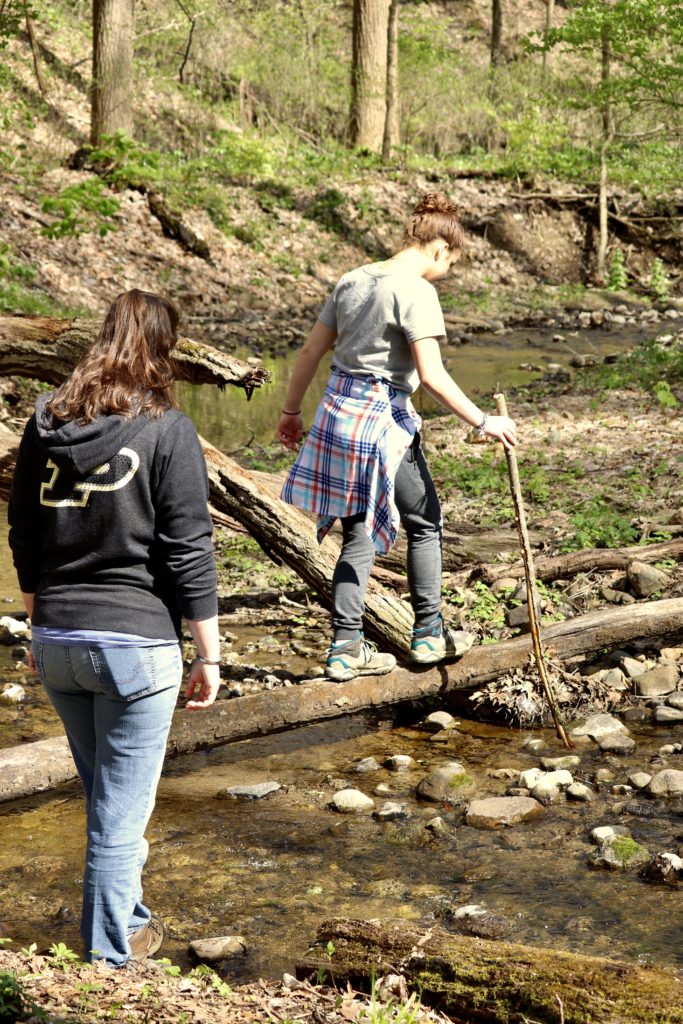
The forest is used for research and outdoor labs for courses. At the beginning of our hike we found 10-15 nesting boxes newly installed about 10 feet off the ground. I’m told by a professor in the forestry department they are for a long-term study on flying squirrels.
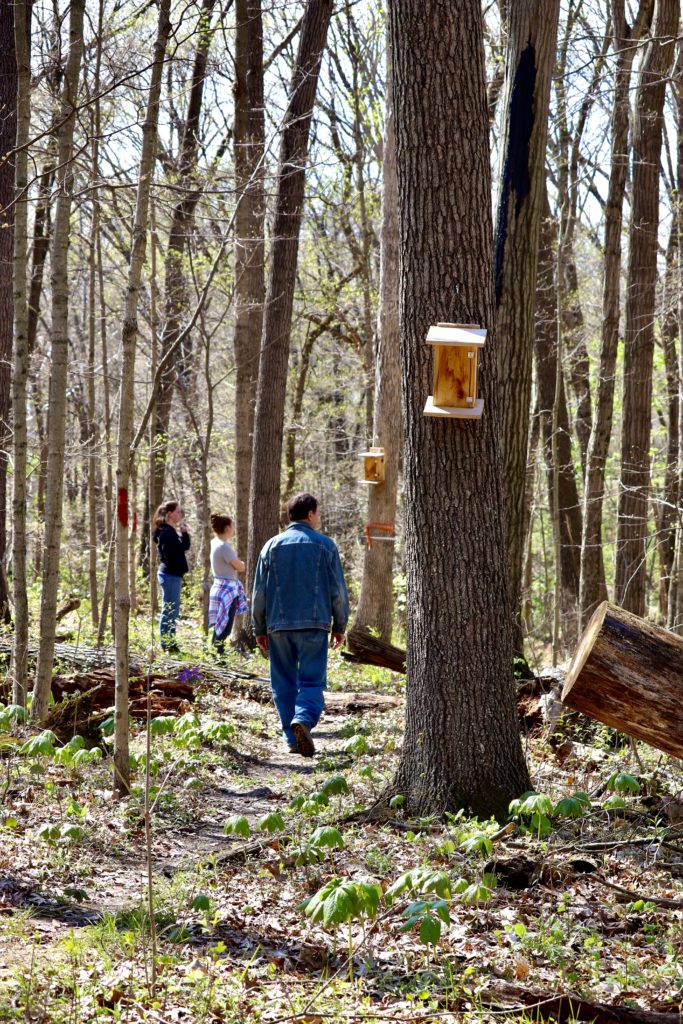
The Wonder of Wildflowers
Spring wildflowers were in their glory all through the woodlands. Prairie trillium (trillium recurvatum) is always a treat to see. Although I grew up with the larger white trillium in OH (T. grandiflora), the maroon-colored trillium is practically all I see in my state. Its range is from Iowa to Pennsylvania and from Texas to Wisconsin. While it’s considered “threatened” in Michigan, I consider it a gift that it is common in my backyard.
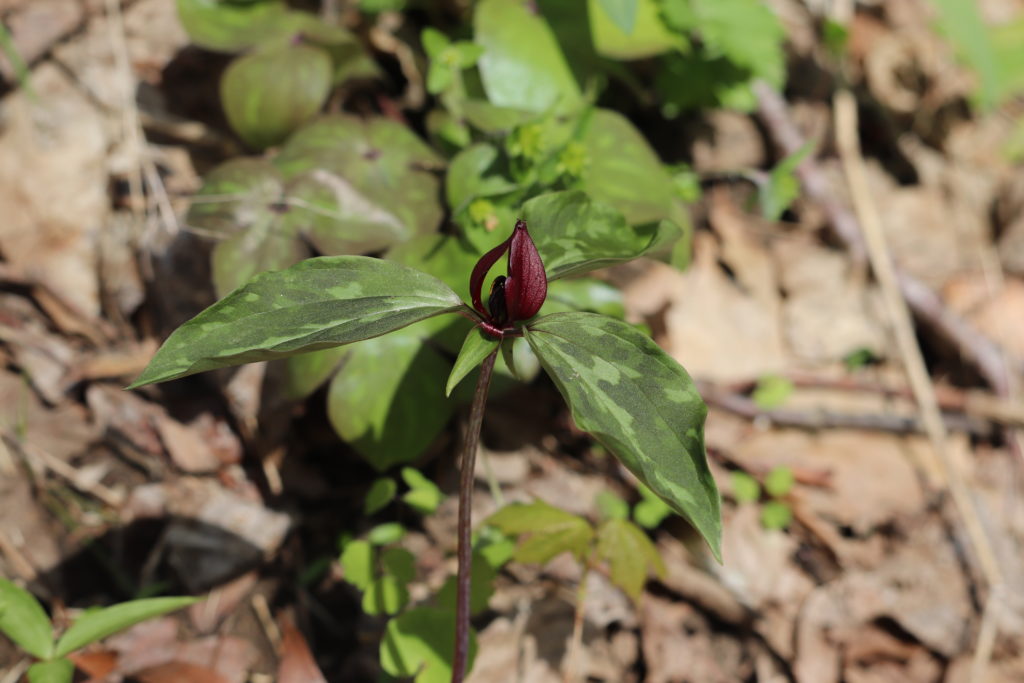
This lovely drooping yellow flower is Perfoliate Bellwort. We are the very western edge of this plant’s distribution. It stretches from IN, KY, and TN on the west, all the way to the Atlantic Ocean on the east, and north to south its range is MA to FL. The Iroquois used an infusion of the roots as a cough medicine as well as for washing sore eyes. It’s endangered in my state, so I was quite excited to photograph it.

Nothing is quite as refreshing as listening to a gently flowing stream or creek in the spring. We didn’t see any minnows, salamanders or water skippers yet but they will soon populate the woodland waters all over the Midwest.
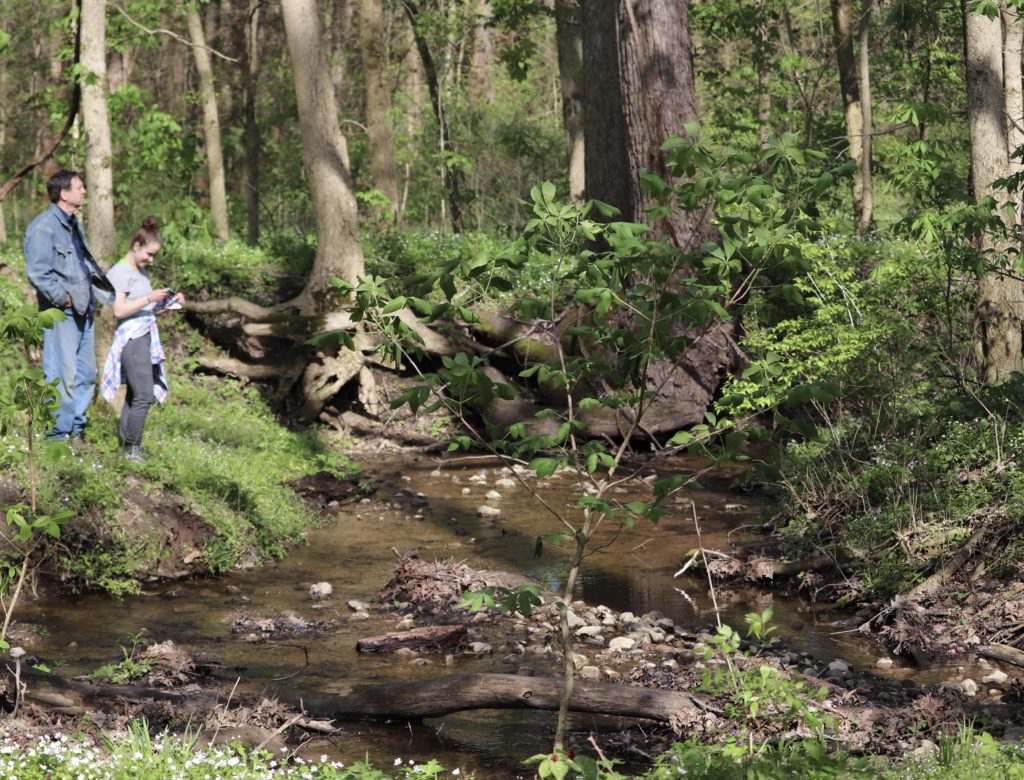
Blue woodland phlox, or wild Sweet William as my father called it, is my favorite spring wildflower. I have transplanted quite a bit of it from our woods up to shady spots in my flowerbeds. It spreads easily to my delight, and it’s always a surprise to see where it will appear next. My mother-in-law had an acre full of meadow phlox, some of which I also transplanted to my home garden beds. Its flower is similar but the meadow phlox plant is much taller and stouter. Though a common garden plant, meadow phlox is considered rare in the wild and is on the threatened or endangered plant species list in some states. Woodland phlox or Sweet William is an early spring bloomer whereas meadow phlox blooms in late summer. Both prefer moist areas along streams and creeks as seen in this photo.
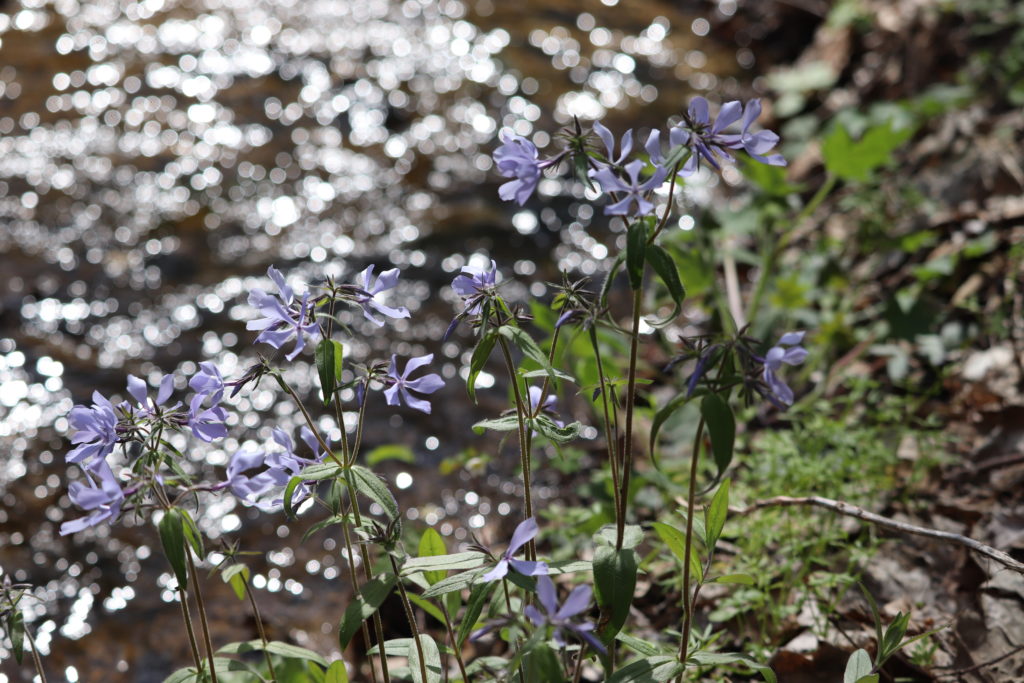
A second photo of Sweet William just because it’s my favorite. 🙂
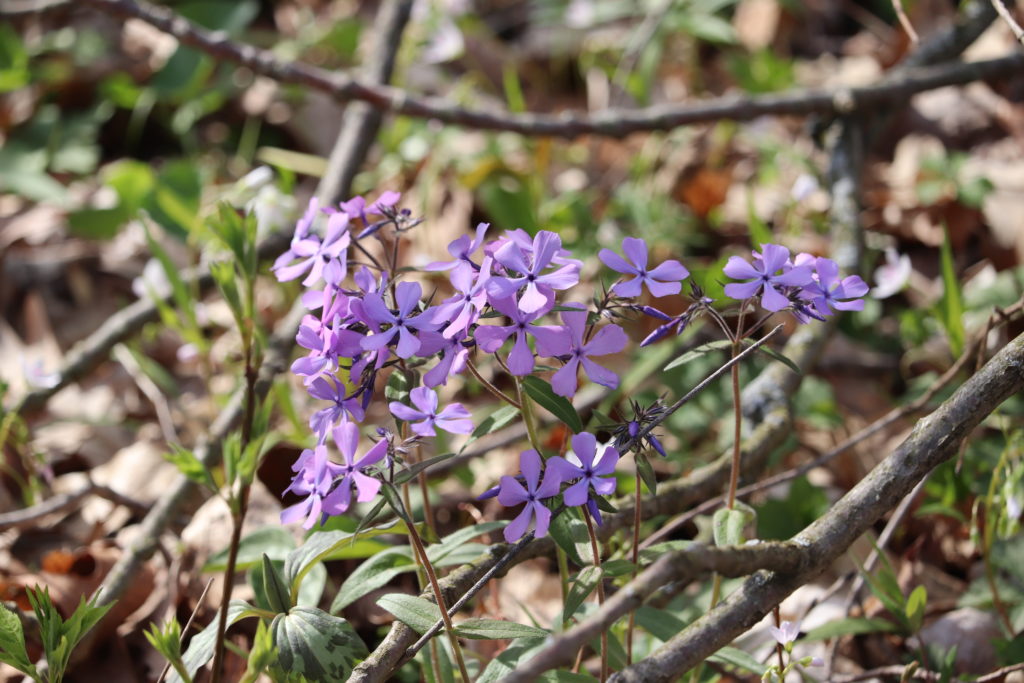
Jack-in-the-pulpit. Can you see why it’s called that? These are so new that the spathe (pulpit) has not folded over the top of the spadix (Jack) yet. Believe it or not, that tiny spadix (Jack) in the middle is covered with tiny flowers and is pollinated by fungus gnats which are attracted by smell. The flower will form 1cm red berries which birds and small rodents eat. But be careful! The raw plant contains calcium oxalate crystals which, in humans, can cause burning of the mouth, throat and digestive system, and on rare occasions may be severe enough to affect breathing. In fact, one account from the Meskwaki Indians states that they would chop the roots and mix it with meat and leave the meat out for their enemies to find.
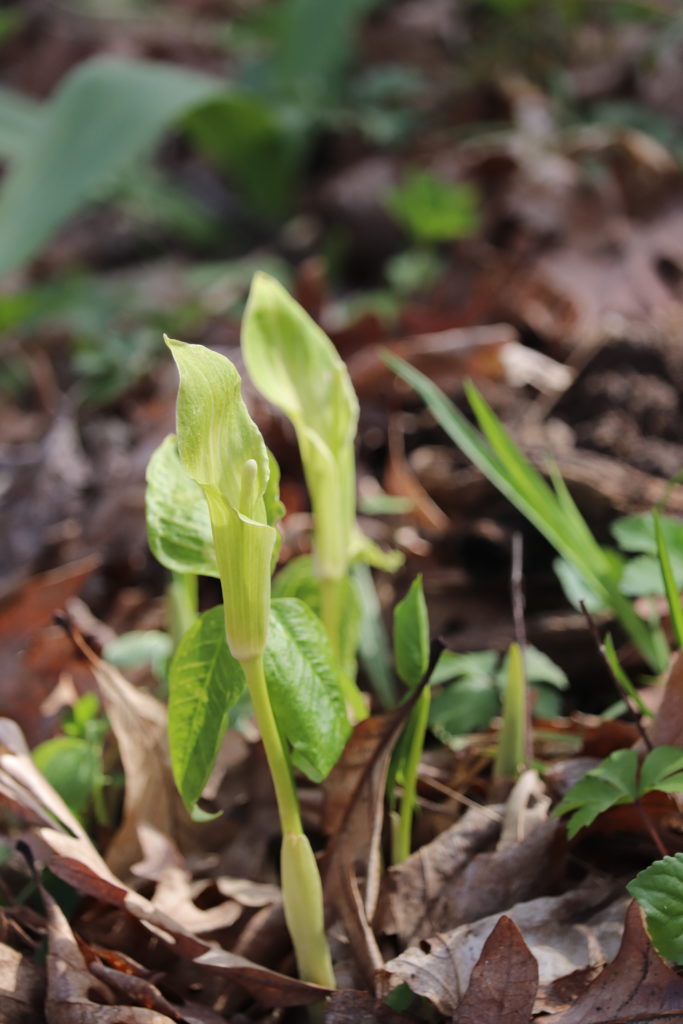
When I learned the name of this spring wildflower as a child from my dad , I thought it was funny: Hepatica. In my Midwestern accent I pronounce it Hy-pat-eh-ka with the emphasis on “pat.” Below is a Sharp-Lobed Hepatica. My botanist friend, Nelson, says the lobe-shaped leaves & odd coloring reminded the early pharmacists of a liver and their belief that the shape of the plant meant it must be able to help hepatitis-type illnesses in humans. Unfortunately this did not prove true. Hepatica in the Midwest will soon have beautiful white or pink flowers that open on sunny days and close on rainy days.
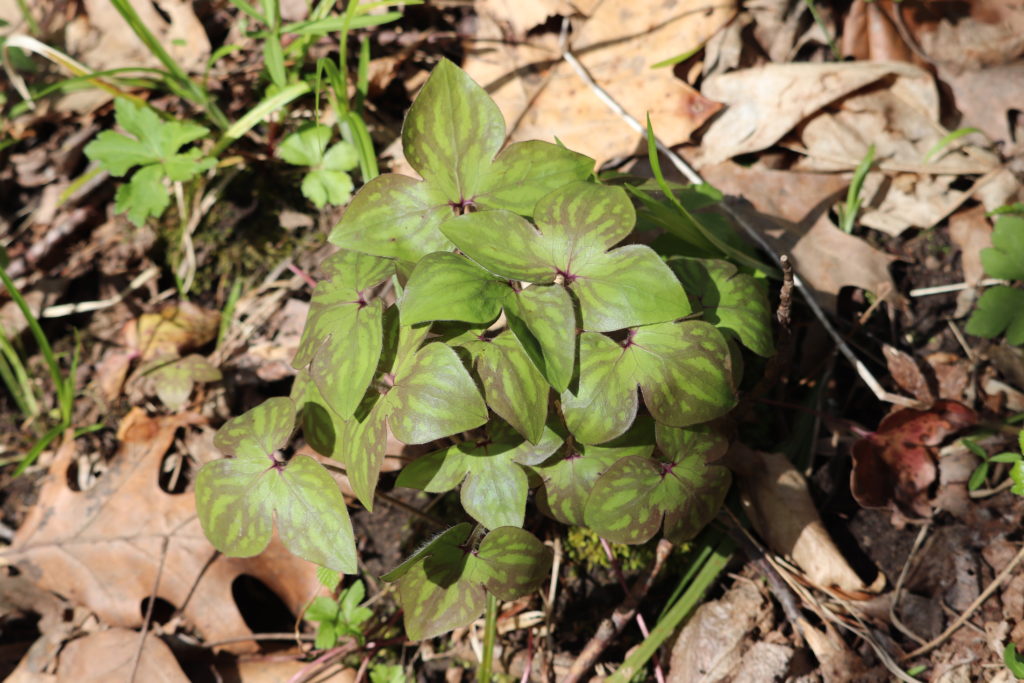
The Wonder of Trees
Nature’s sculpture. The soil has been washed away over time under this tree to expose a wondrous root system.
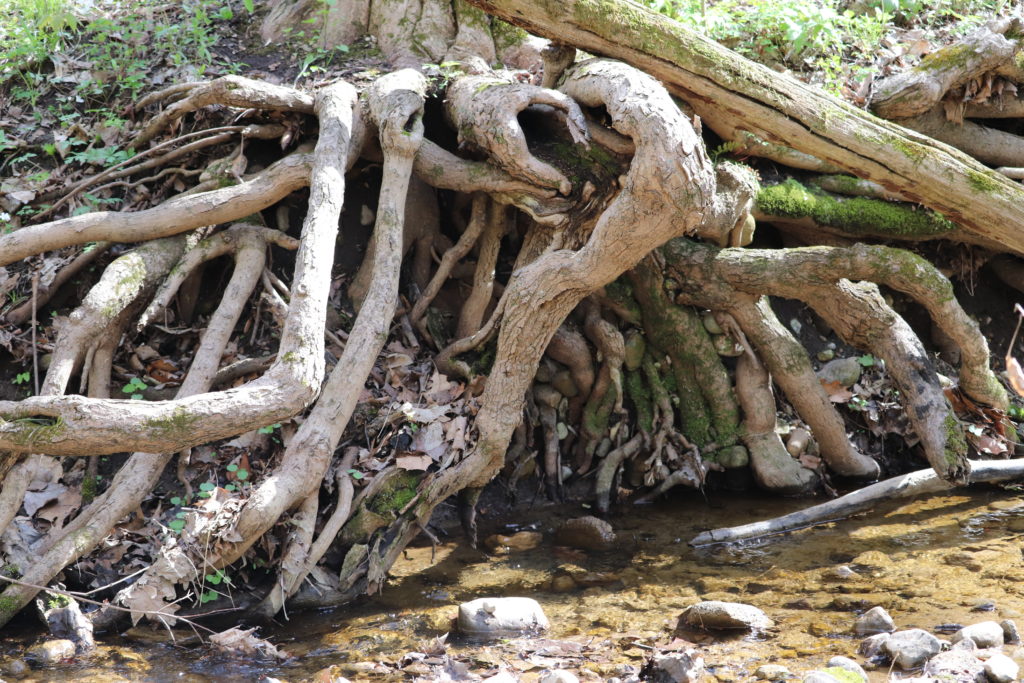
I saw this tree from afar and laughed. Doesn’t it look like a huge smile? I am curious though how it got a wound in that shape.
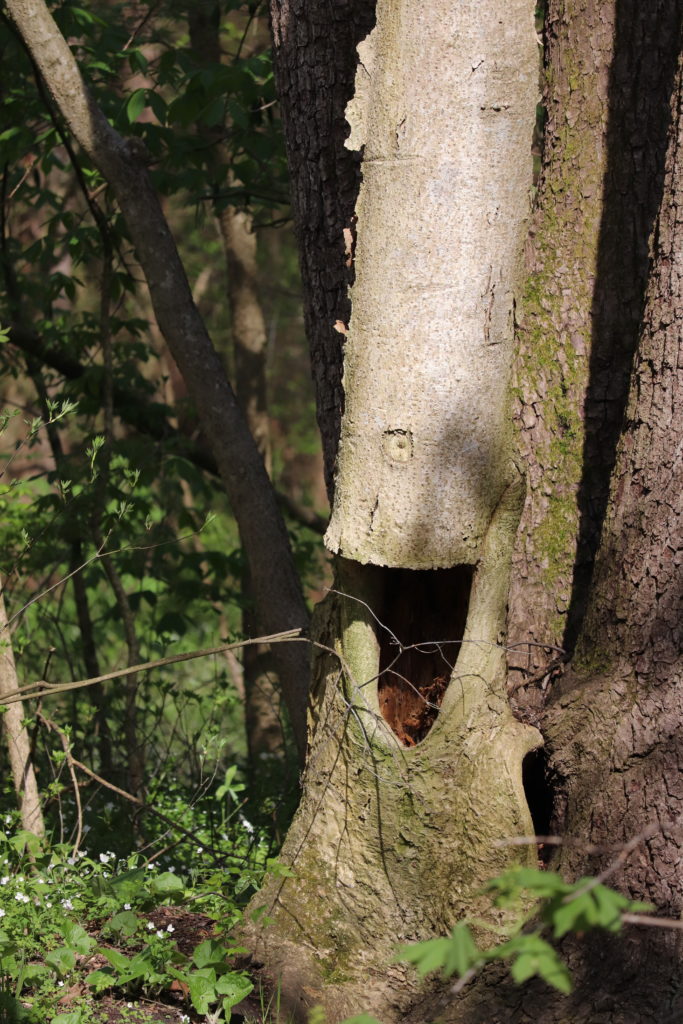
We came across a logged area. Normally I am in favor of thinning a crowded forest or culling out the unhealthy trees, but I was more than a bit disturbed to see several healthy-appearing, virgin timbers cut. We counted approximately 210 rings on this stump! Four adults could stand on the stump easily. It was HUGE. Virgin timber like this are few and far between and need to be preserved.
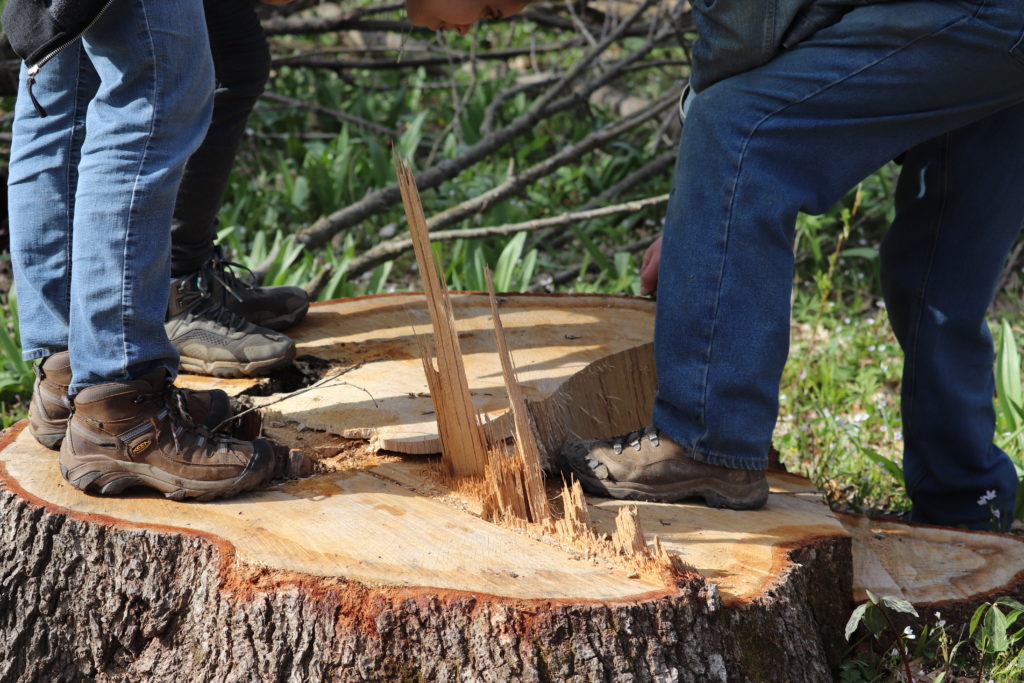
The log below came from another virgin tree in the area. It has some issues in the center but is definitely healthy and strong enough to survive for quite some time. What beautiful wood, to be sure, but because its size is so rare, I’d rather it had been left living for generations to come.
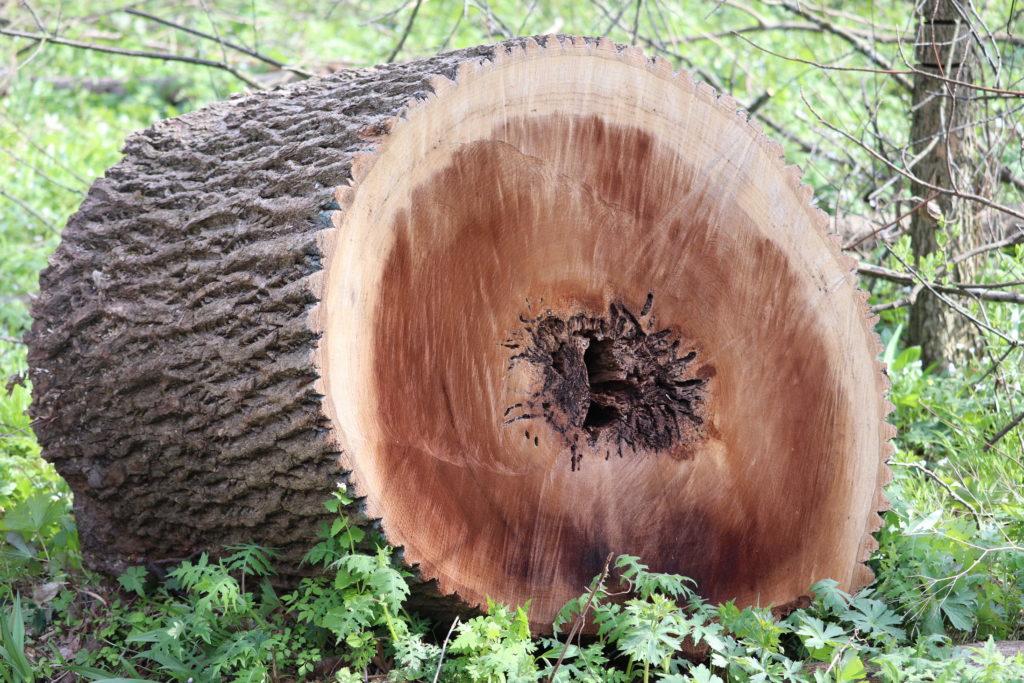
Woodpecker Central. Wow, this tree certainly had somebody’s attention!
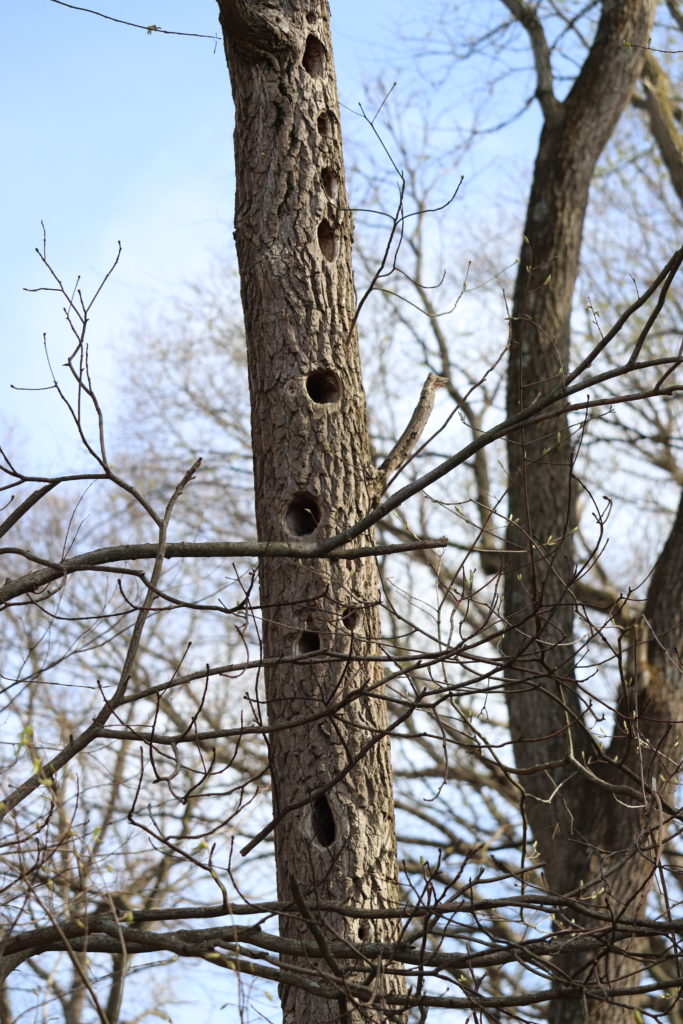
For an afternoon, all the worries and changes to routines from the pandemic were forgotten and we had one of our best family outings of the year so far. Nature changes so fast, I can’t wait to do another family adventure.
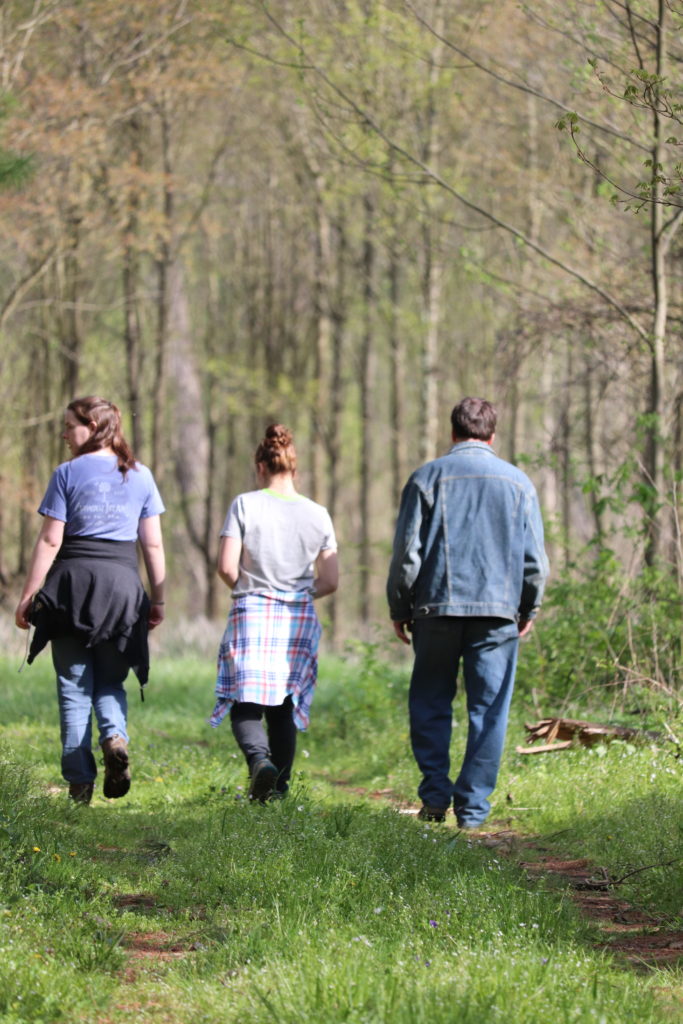
What has been your “go-to” to get refreshed and recharged during the pandemic? Have you seen any of the plants mentioned above in your area?
Follow me on Instagram @thewonderofwild.
Till next time, catch ya later,
Carolyn
Carolyn, loved reading your post! It brought back so many memories of my childhood walks through our farm woods. Gorgeous photos too.
Stay safe & healthy!
Holly
Thanks, cousin! Somewhere in the family genetics there must be an artistic gene because you certainly got the painting gene, your mom had the writing gene and my dad had the photography gene! For most on my side of the family, though, we missed getting the singing gene !! Congratulations on the new home and location ~ there must be so much new material for you to paint there!
Just lovely, Carolyn! I thoroughly enjoyed! You surely are well informed!
I never knew we had flying squirrels— always mistakenly thought they were
more tropical! I grew up with white trilliums in Canada, & I if I remember
correctly, a red one was a special find. But I love this deep maroon! Also, by
the tree trunk that’s smiling, I see some tiny white flowers??
Thanks for this adventure— I can almost hear the gurgling stream waters!
Twice we’ve found our dog with a dead flying squirrel ~ I think the cats were the criminals and he was just caught with the evidence! The flowers by the smiling tree trunk are called isopyrum. This was a new spring flower for me! Our mutual friend, Nelson, helped me identify them. There were carpets of them but I was unable that day to get a good photograph of them. They are similar to spring beauties in color and size of bloom but more foliage.
Spring is my absolute favorite season of the year! I really loved seeing and reading about all the different plants you found! Whenever I go on walks I never stop long enough to really look at all the different flowers and plants nearby, but it was so cool to learn about each one! My favorite is the Sweet William flower, because it is so beautiful and it is one of the first spring flowers that I see! Your picture of the roots on that one tree was so cool and the “smiling” tree made me laugh! 🙂 I always love it when you include knowledge about the Indians and how they used to live. That fact about the Jack-in-the-pulpit and how the Indians used it was so interesting ! As always, great post! I can’t wait to see more beautiful spring/summer pictures from you!
I love all these pictures!!! You did such a good job of capturing God’s wounderful creation we are blessed to live in!! I thought the tress are REALLY cool!! I climbed on some of the roots and it was so fun!!
Spring is such a beautiful time of the year and I’m excited to see more pictures!!